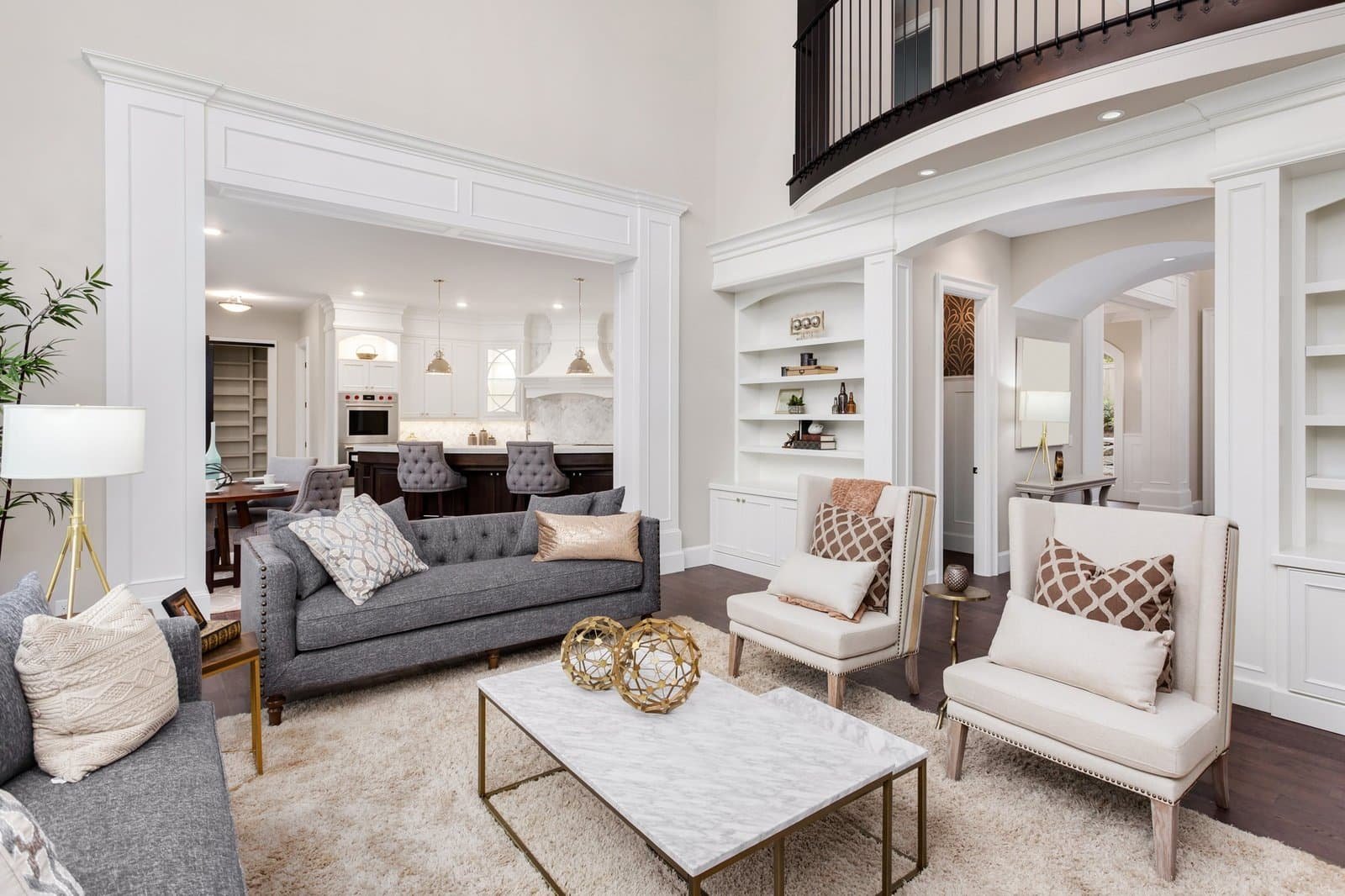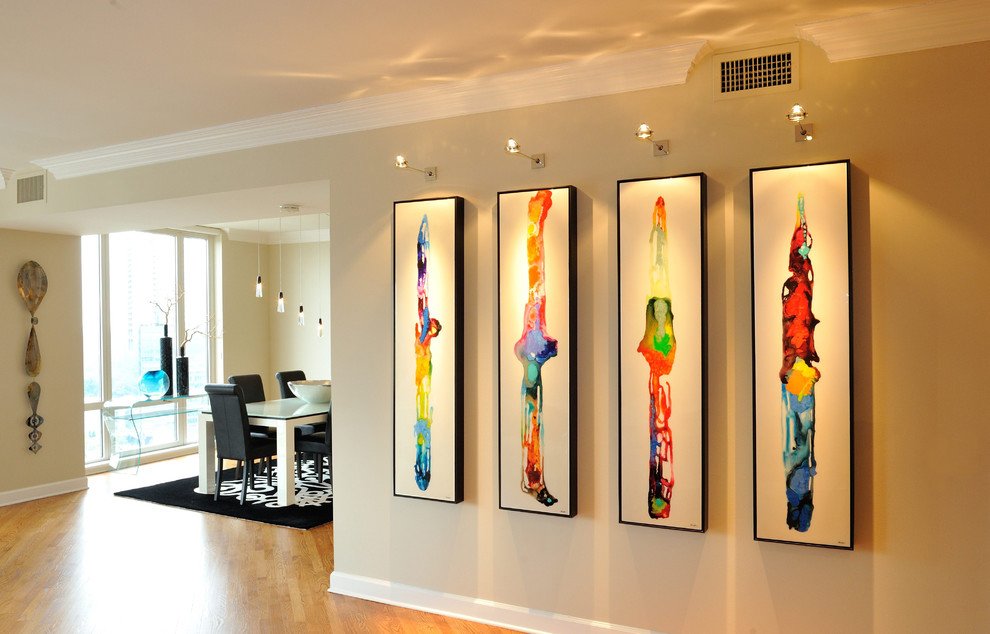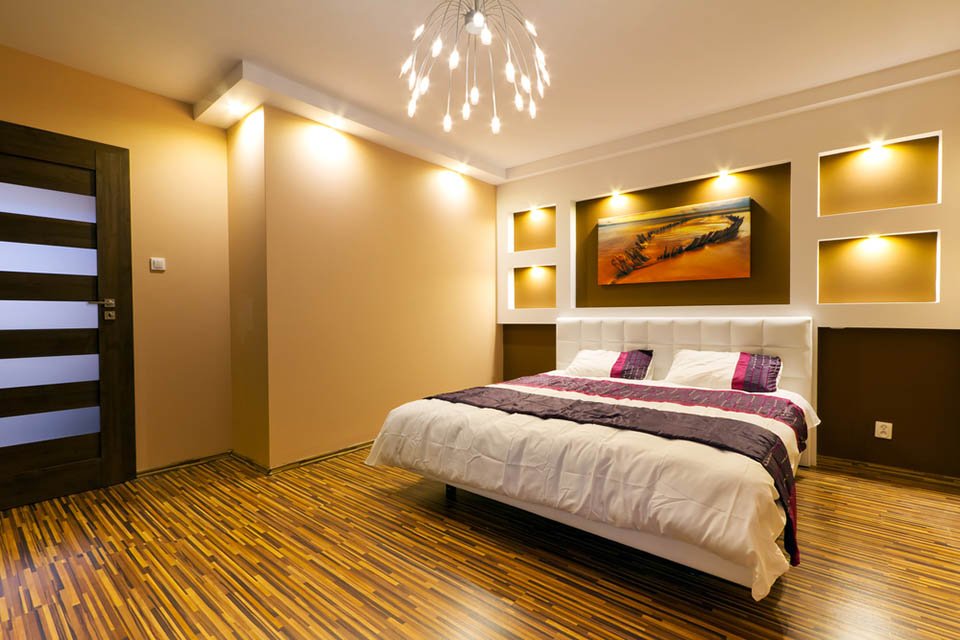Welcome to the final chapter of our lighting mini-series. In Parts 1 and 2 we explored how designers layer ambient and task light so rooms feel effortless at any hour. This time, we’re dialing in the third layer—accent lighting – the layer that adds depth, highlights texture, and turns everyday corners into moments. Done well, accent light is the difference between a room that’s merely bright and a room that feels curated.
Accent lighting = form + function
Accent light does two jobs at once. Functionally, it guides the eye and clarifies zones; aesthetically, it sculpts surfaces and celebrates materials. Think of it as a gentle “spotlight” for what you love—stone, art, millwork, books—without blasting the space with raw lumens. Modern LEDs make this easier than ever: compact profiles, low heat, precise dimming, and tunable color all unlock effects that used to require custom fixtures.
Strip & linear lighting: small profiles, big impact
LED tape and slim linear bars tuck into places bulky fixtures can’t. Under cabinets, they deliver crisp task light without glare. Inside bookcases or bar shelves, they create a floating effect and depth. Along stair treads, they add drama and safety. Across a stone fireplace, a narrow graze reveals texture you hardly notice by day.
- Choose high CRI (90+) for accurate material and paint color.
- Mount with an aluminum channel and diffuser to even out “hot spots.”
- Dim to ~20–40% for evening scenes; reserve 80–100% for cleaning or prep.
Color & tunable white: mood on a dimmer

Today’s systems let you shift both hue and white points. Warm dim (2700K → 1800K) mimics candlelight for cozy evenings; tunable white (e.g., 2700K–5000K) supports circadian comfort—cooler for focus, warmer for unwind. Full RGBW opens creative scenes for entertaining, holidays, or simply defining zones in open plans.
- Use warm dim for living rooms and dining; tunable white for kitchens and offices.
- Reserve saturated color for accents (niches, coves) so it feels intentional.
- Pre-program scenes (e.g., “Morning,” “Work,” “Dinner,” “Movie”) and trigger via keypad, voice, or schedule.
Architectural highlights you’ll actually use
Floating shelves & bars: Backlight with 45° channels to wash bottles or objects, keeping the light source hidden.
Hallways &niches: A slim cove or picture light adds rhythm and reduces “tunnel” feel.
Ceiling features: Perimeter coves lift the lid visually; a gentle halo can make standard ceilings feel taller.
Lighting for art (and letting art lead)

Accent lighting shines when it has something beautiful to honor. A focused beam (narrow to medium) reveals texture on canvas and brings pigments to life; wall washers are better for large pieces or galleries where you want even illumination. If you’re still choosing artwork, let the piece dictate the light—size, finish, and beam spread should follow the art, not the other way around. Explore large, ready-to-hang pieces at tryartwork.com/ and size your beam angle so the light falls just inside the frame for a museum-clean edge.
Automation: scenes, sensors, and smarts
Accent lighting earns its keep when it behaves automatically. Tie scenes to sunrise/sunset, occupancy, or a “Goodnight” button that fades to 0% and leaves a low path light for safety. In media rooms, have the strip behind the TV rise as the overheads dip, keeping eyes relaxed. In kitchens, under-cabinet strips can pop on to a low level when motion is detected after dark.
- Link dimming curves so accent layers always sit a step below ambient.
- Use time-based shifts (warm in the evening, neutral by day) for comfort.
- Create a “Cleaning” scene that temporarily raises every layer to 100%.
Choosing the right gear (without brand whiplash)
Focus on specs, not labels: consistent color temperature (≤2 SDCM), high CRI (90–95+), reliable dimming (flicker-free at low levels), and proper heat management for longevity. For strips, match driver wattage to total load with 15–20% headroom; for color-tunable systems, ensure your control platform speaks the same protocol (e.g., DALI DT8, DMX, or manufacturer’s native).
Quick Placement Playbook
- Grazing (2–6″ from surface): Reveals stone, brick, and plaster texture.
- Washing (12–24″ out): Smooth, even light for larger art or feature walls.
- Backlighting: Creates halos for mirrors, TVs, shelves—depth without bulk.
- Toe-kicks & stairs: Low-level guidance that looks high-end at night.
Common Pitfalls (and Easy Fixes)
- Hot spots & dots: Add a diffuser and increase distance from the surface.
- Color mismatch: Source all tape from the same batch; specify binning.
- Harsh glare: Recess fixtures, use louvers, or drop output and add more runs.
- Too much “wow” all the time: Let automation keep accent layers subtle by default.
Bring It All Together
Accent lighting is the playful layer that also makes a room feel finished. Start with what you want to celebrate—materials, art, architecture—then pick the right technique: graze for texture, wash for breadth, backlight for depth, color for mood. Tie it to smart scenes so it’s effortless day to night. And if you’re building the space around a statement piece, let art lead the light—browsing options at tryartwork.com is a great first step to set scale and palette before you dial in beams and dimming curves.



